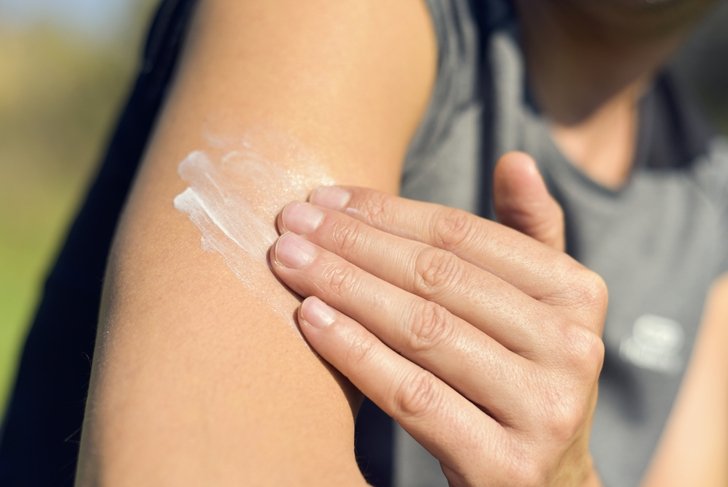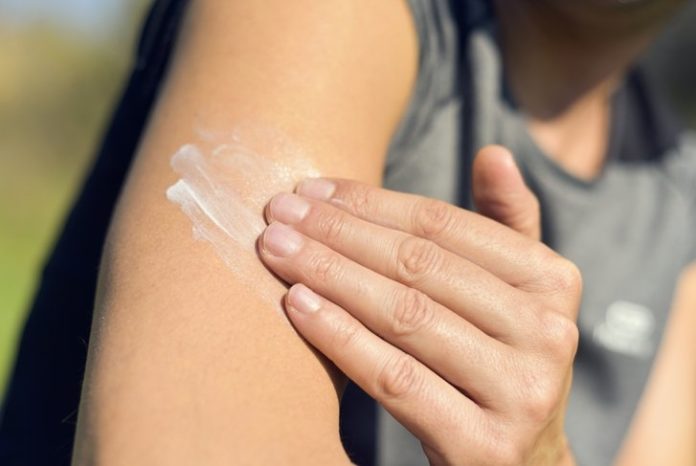
Between damage to sea life, nasty chemical ingredients, and the fact that skin cancer rates are still rising, you might be questioning whether sunscreen is such a good idea. It is—if you choose the right kind.
You’ve heard it a hundred times—as pleas from parents, product taglines, or public service announcements: “Wear sunscreen to prevent skin cancer!”
During summer months, you comply by slathering coconut-scented creams onto your exposed skin. And why wouldn’t you? It’s a simple equation: The sun produces ultraviolet (UV) rays, which cause sunburns and skin cancer. Using a full-spectrum sunscreen helps prevent UV rays from penetrating the skin, reducing skin cancer risk.
But what if the equation isn’t so simple?
According to the Environmental Working Group (EWG), scientists and public health agencies “have found little evidence that the use of sunscreens in isolation from other sun protective measures prevents most types of skin cancer.”
This seems to align with the steady increase in skin cancer cases. According to the National Cancer Institute, melanoma rates “have been rising on average 1.5 percent each year over the last 10 years.”
While this evidence shouldn’t have you tossing your sunscreen habits out the window, it certainly suggests you should take a moment to re-examine your relationship with sunscreen to make better-informed decisions. A lot depends on it.
IS SUNSCREEN EFFECTIVE AGAINST SKIN CANCER?
Without a doubt, UV rays cause skin cancer. But under the umbrella term “UV rays” are UVA rays and UVB rays—both dangerous in their own ways.
UVB rays make up about 3 to 5 percent of the UV rays reaching the Earth’s surface and are the primary cause of precancerous DNA mutations and the dreaded sunburn. Many sunscreens, when applied correctly, block UVB rays and prevent sunburn.
However, prolonged sun exposure, even when not resulting in sunburn, can have dangerous consequences. UVA rays— responsible for tanning—penetrate deeper than UVB rays, generating free radicals that can lead to DNA damage and cause skin cancer. Unfortunately, many sunscreens protect from sunburn and not much else, since UV rays break down the most common chemical UVA filter used in sunscreen, avobenzone.
PROTECTION AGAINST YOUR SUN PROTECTION
To better understand the difference between “good” sunscreens and “bad,” it’s important to distinguish between those using mineral filters and those using chemical filters as the active ingredients.
Mineral filters include zinc oxide and titanium dioxide. Both are stable in sunlight, and together they protect well against both UVA and UVB rays. Mineral-only sunscreens are also often free of harmful additives.
Chemical filters, on the other hand, have a less-than-stellar reputation and include avobenzone, homosalate, octinoxate, octisalate, octocrylene, and oxybenzone. New FDA research shows all these chemicals are absorbed through our skin—even after one use—and remain in our bodies for quite some time.
While more research is needed to determine exactly how worrisome this absorption is for human health, early research is sobering. For example, oxybenzone is an allergen and a hormone disruptor. A 2016 study that found that higher levels of oxybenzone were associated with lower levels of testosterone in adolescent boys.
The FDA has proposed new sunscreen regulations that recognize two active sunscreen ingredients as safe and effective: zinc oxide and titanium dioxide. Twelve other active ingredients currently on the market— including the chemicals listed above—would require further safety and efficacy testing.
SUNSCREEN AND THE ENVIRONMENT
Think about it: We slather potentially harmful chemicals all over our bodies, only to jump into a pool or ocean where those same chemicals leach into the surrounding water. What does this do to the environment?
Thanks to global warming, coral reefs are already facing unprecedented rates of bleaching, with mass bleaching occurring five times more frequently than in the 1980s. Now we can add sunscreen to its list of threats. A recent report from the International Coral Reef Institute cites several studies suggesting oxybenzone may contribute to “bleaching of coral fragments and coral cells from various species of hard coral.”
Oxybenzone may also harm fish embryos, as shown in a 2018 study. The researchers found that although zebrafish exposed to multiple common UV filters showed no signs of problems, their offspring displayed abnormalities.
WHAT TO LOOK FOR THIS SUMMER
Mineral-only sunscreens are your best bet when it comes to sun protection. Although these formulas are often made with zinc oxide and titanium dioxide nanoparticles, there is no evidence to suggest the particles penetrate the skin (phew!). You can find a range of mineral sunscreens at your local natural health retailer.
With more Americans being diagnosed with skin cancer each year than all other cancers combined, it’s fair to say that sun safety is more important than ever. Until recently, many of us chose our sunscreen based on superficial factors like look, smell, and price. Now, we need to consider individual ingredients—not only for our health, but also for the planet’s.
Amy Wood is an ecosocialist, intersectional feminist, and founder of Shine Bootcamp, a public speaking incubator for women in tech, marketing, and startup environments. twitter.com/amy_would
This article was originally published in the July/August issue of alive USA magazine, under the title \”Is sunscreen worth it?\”
























